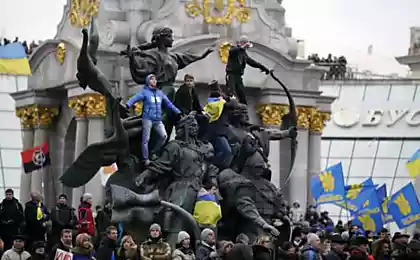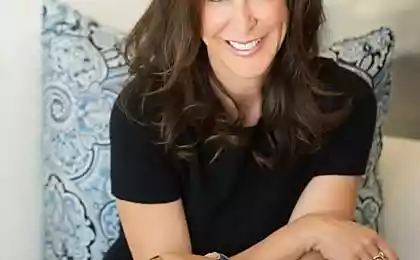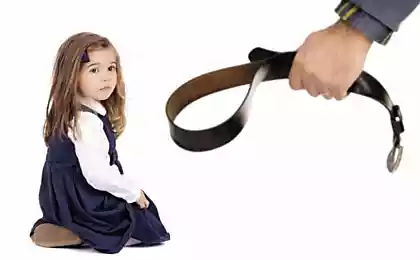843
What keeps the Motherland in Kiev
You can have different attitudes to museums. Someone thinks that it is no use to anyone, someone - that we should not live in the past, to live the present, others - that it is important to know and remember their culture and history.
But some things you just need to know and remember, it is possible not to repeat in the future.
This phrase about the museums dedicated to the Great Patriotic War.
Motherland in Kiev can be seen from many places in the city. The huge monument, which is higher than the Statue of Liberty in New York, and who at the time of opening in 1981 was the highest in the USSR, symbolizes the struggle of the Soviet people against fascism at the front and in the rear.
At its foot, in the array of the hill is the National Museum of the Great Patriotic War of 1941-1945, consisting of a plurality of rooms with installations, original documents and artifacts. At the end of the exhibition visitor is striking a giant hall of memory with an endless panels of photographs of the war dead of the Soviet people, thousands of funerals and memorial cut glasses, and a second giant hall in which many tens of meters up out of the same endless list of names and surnames of people who are on the War Heroes of the Soviet Union ...
46 photos via aquatek-filips

2. In this post I will not speak a lot of words. Here, the pictures speak for themselves.
Monument Motherland rises above Kiev on the right bank of the Dnieper in the 102 meters. In the array of the hill beneath the museum is open Leonid Brezhnev May 9, 1981.
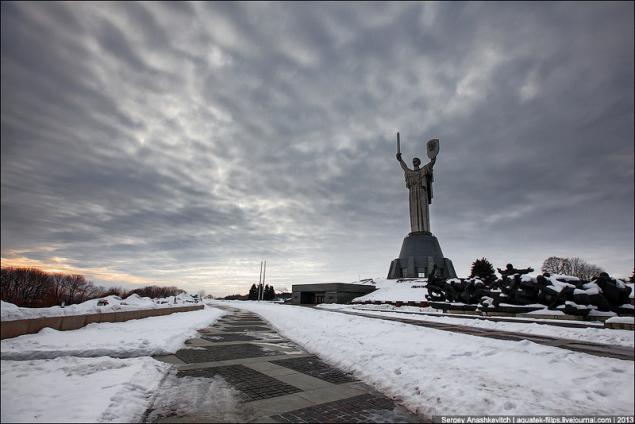
3. The museum is entirely devoted to the history of the Great Patriotic War, and more than 300 thousand exhibits from all over the Soviet Union. The museum exposition is without prejudice to any specific region, and talks about the war on the entire territory of the USSR - from the North Sea to Sevastopol and the Caucasus

4. Start the exposure. Pieces of melted first hours of the war the Brest Fortress. In a single breed rafted brick fragments of bombs, shells, etc.

5. This brick, alloys with shrapnel and the sleeves from the streets of Kiev in 1941

6. Soldier spoon, bowl and mug.

7. downed near Kiev in 1941, the Soviet Il-2
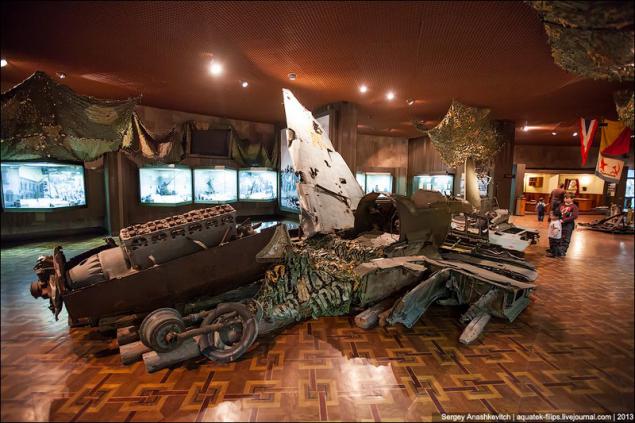
8. So the car lying on the ground, according to museum workers
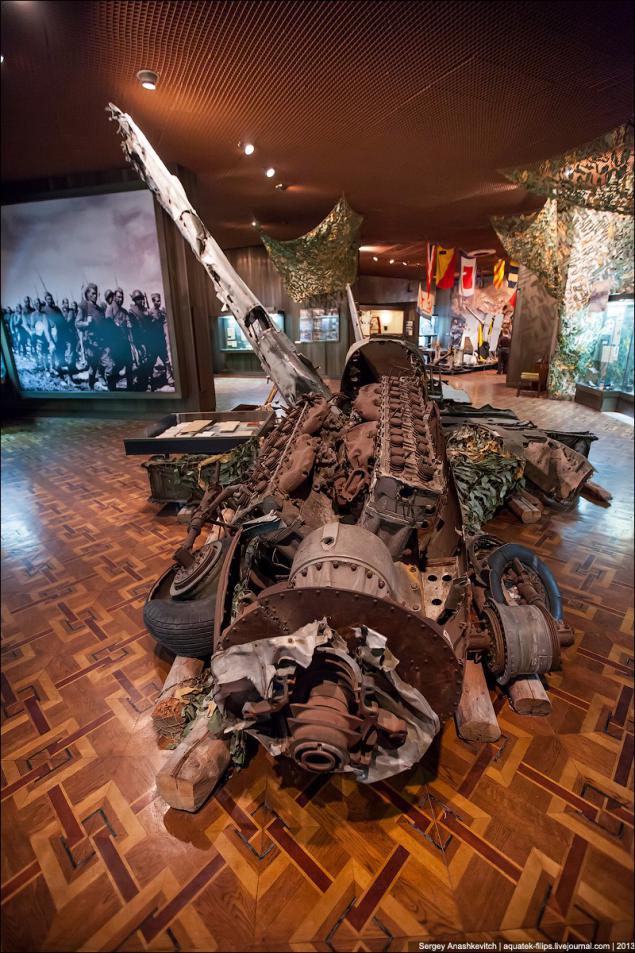
9. Engine

10. The bullet-wing

11. Installation of 'Defense Kiev »

12. Elements of the installation

13. Live lifeless face

14. The life of these people to stop in September 1941, near Kiev
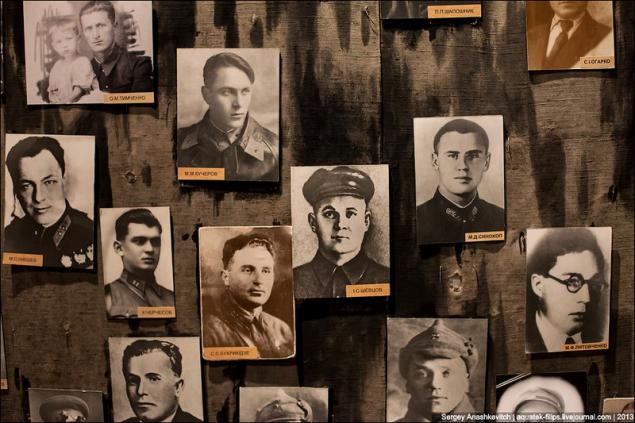
15. Document refugee
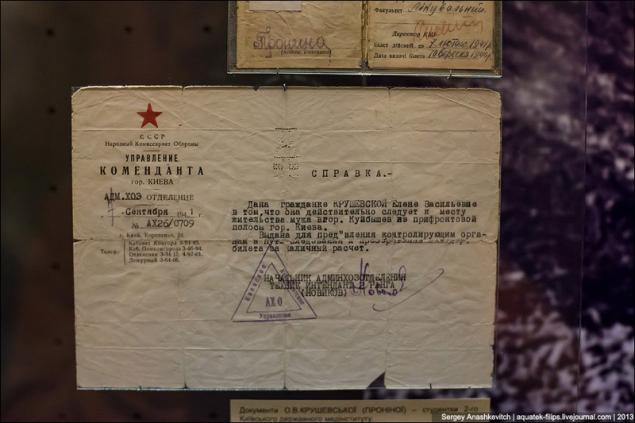
16. Notebook Red Army colonel

17. Another notebook

18. Card water Bertha Broer, who lived down the street of Kirov, 74 in Odessa. During the defense of Odessa has suffered from a lack of drinking water in sufficient quantities, which greatly complicates the task of soldiers and civilians

19. Information on conferring the title of Hero of the Soviet Union
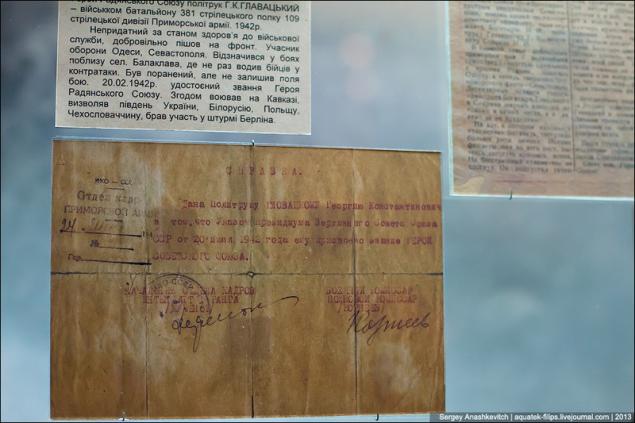
20. One of the worst reference, which came the inhabitants of the country living in the rear - that their relatives unaccounted for.
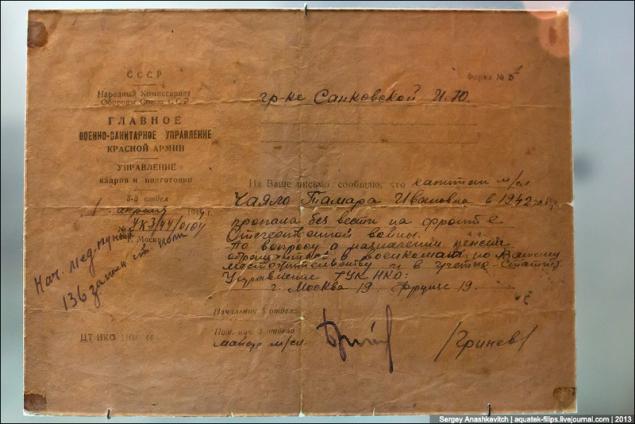
21. Measure the value of the siege of Leningrad - ration cards and rump black bread, all decreasing weight with months of blockade

22. Cost of Living besieged Leningrad. 125 grams of bread for the children of employees and dependents in the most difficult months

23. Hall of the concentration camps. Installation in the center - the guillotine, barbed wire, stretchers and camp clothing

24. Frayed camp robe

25. Children's shirt number

26. Installation "All that's left from a man»

27. Hopelessness

28. One of the worst exhibits - women's gloves made of human skin

30. Soap, brewed from human fat in a German concentration camp
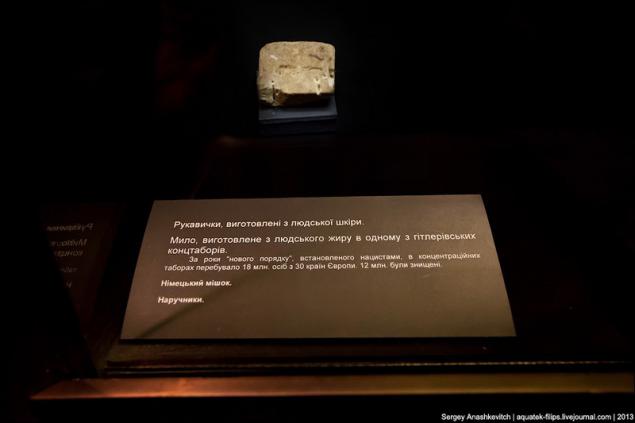
31. Kostedrobilnaya machine. Because the bones of executed prisoners in a concentration camp Janov (near Lviv), the Germans made fertilizer for their fields.

32. The book of the dead Soviet prisoners of war in a concentration camp Rep
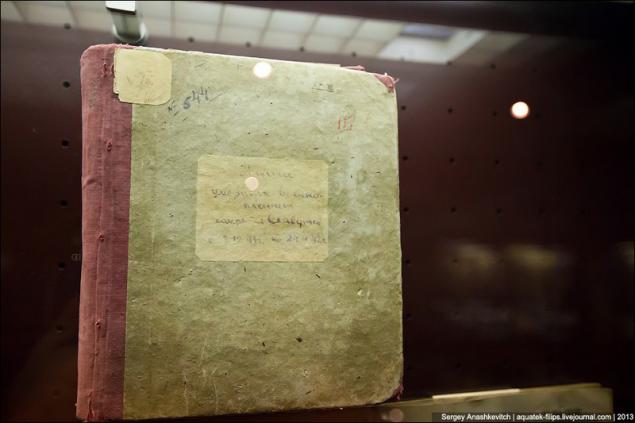
33. kpect Symbolic funerals of soldiers

34. funerals

35.

36. Soldiers lighters

37. pouches for tobacco
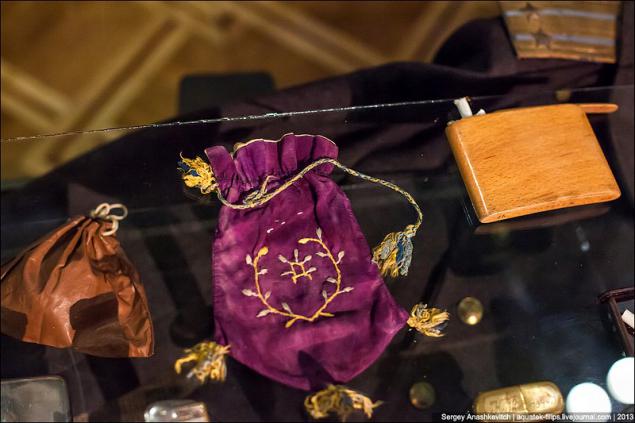
38. Letters of soldiers and did not come down to their relatives

39. The giant hall memory semicircle stretching into the distance. Standing at its entrance, the output is not visible, so it seems that he does not end

40. faceted glass next to the funerals from the front

41. funerals
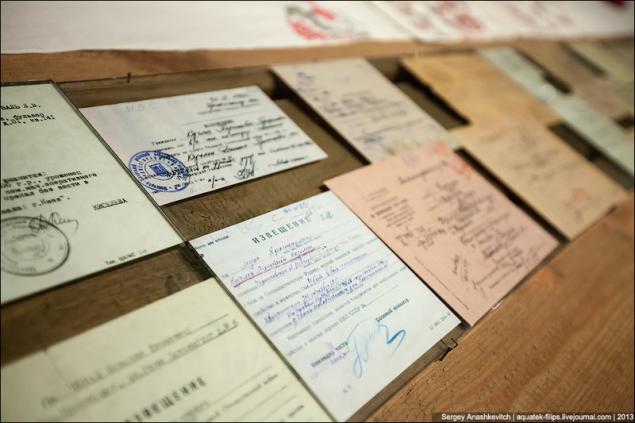
42. Panels with photos of those killed in the war

Source:
But some things you just need to know and remember, it is possible not to repeat in the future.
This phrase about the museums dedicated to the Great Patriotic War.
Motherland in Kiev can be seen from many places in the city. The huge monument, which is higher than the Statue of Liberty in New York, and who at the time of opening in 1981 was the highest in the USSR, symbolizes the struggle of the Soviet people against fascism at the front and in the rear.
At its foot, in the array of the hill is the National Museum of the Great Patriotic War of 1941-1945, consisting of a plurality of rooms with installations, original documents and artifacts. At the end of the exhibition visitor is striking a giant hall of memory with an endless panels of photographs of the war dead of the Soviet people, thousands of funerals and memorial cut glasses, and a second giant hall in which many tens of meters up out of the same endless list of names and surnames of people who are on the War Heroes of the Soviet Union ...
46 photos via aquatek-filips

2. In this post I will not speak a lot of words. Here, the pictures speak for themselves.
Monument Motherland rises above Kiev on the right bank of the Dnieper in the 102 meters. In the array of the hill beneath the museum is open Leonid Brezhnev May 9, 1981.

3. The museum is entirely devoted to the history of the Great Patriotic War, and more than 300 thousand exhibits from all over the Soviet Union. The museum exposition is without prejudice to any specific region, and talks about the war on the entire territory of the USSR - from the North Sea to Sevastopol and the Caucasus

4. Start the exposure. Pieces of melted first hours of the war the Brest Fortress. In a single breed rafted brick fragments of bombs, shells, etc.

5. This brick, alloys with shrapnel and the sleeves from the streets of Kiev in 1941

6. Soldier spoon, bowl and mug.

7. downed near Kiev in 1941, the Soviet Il-2

8. So the car lying on the ground, according to museum workers

9. Engine

10. The bullet-wing

11. Installation of 'Defense Kiev »

12. Elements of the installation

13. Live lifeless face

14. The life of these people to stop in September 1941, near Kiev

15. Document refugee

16. Notebook Red Army colonel

17. Another notebook

18. Card water Bertha Broer, who lived down the street of Kirov, 74 in Odessa. During the defense of Odessa has suffered from a lack of drinking water in sufficient quantities, which greatly complicates the task of soldiers and civilians

19. Information on conferring the title of Hero of the Soviet Union

20. One of the worst reference, which came the inhabitants of the country living in the rear - that their relatives unaccounted for.

21. Measure the value of the siege of Leningrad - ration cards and rump black bread, all decreasing weight with months of blockade

22. Cost of Living besieged Leningrad. 125 grams of bread for the children of employees and dependents in the most difficult months

23. Hall of the concentration camps. Installation in the center - the guillotine, barbed wire, stretchers and camp clothing

24. Frayed camp robe

25. Children's shirt number

26. Installation "All that's left from a man»

27. Hopelessness

28. One of the worst exhibits - women's gloves made of human skin

30. Soap, brewed from human fat in a German concentration camp

31. Kostedrobilnaya machine. Because the bones of executed prisoners in a concentration camp Janov (near Lviv), the Germans made fertilizer for their fields.

32. The book of the dead Soviet prisoners of war in a concentration camp Rep

33. kpect Symbolic funerals of soldiers

34. funerals

35.

36. Soldiers lighters

37. pouches for tobacco

38. Letters of soldiers and did not come down to their relatives

39. The giant hall memory semicircle stretching into the distance. Standing at its entrance, the output is not visible, so it seems that he does not end

40. faceted glass next to the funerals from the front

41. funerals

42. Panels with photos of those killed in the war

Source:




